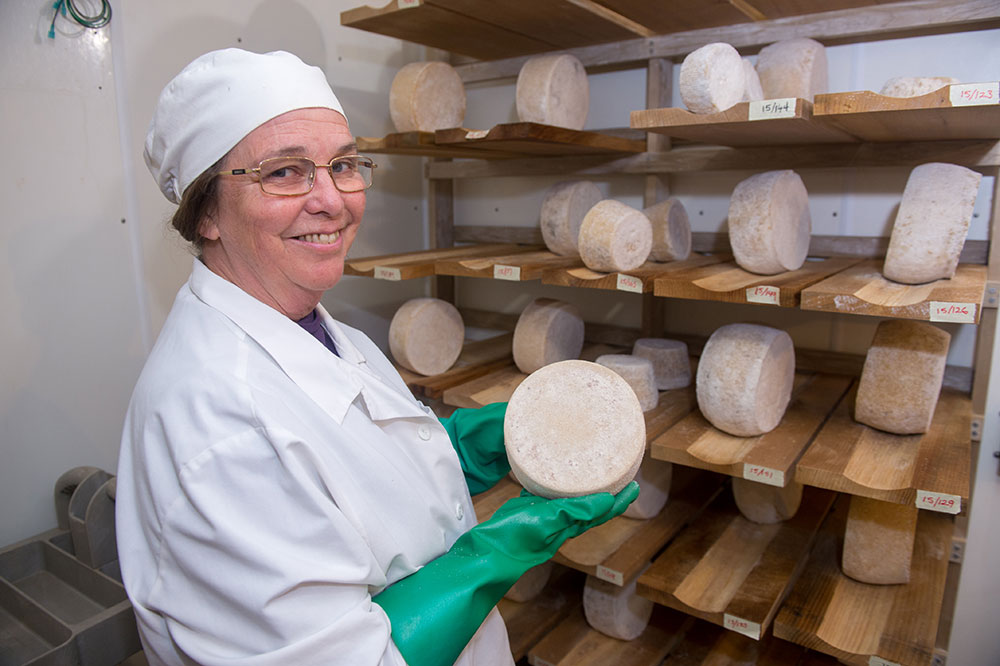Opening the Keys of Artisanal Cheese Making: A Step-by-Step DIY Overview
In the world of culinary craftsmanship, artisanal cheese making stands as a testament to the fragile equilibrium in between practice and innovation. Each step in the procedure, from picking the right milk to refining aging methods, holds within it a wide range of expertise passed down through generations. As we begin on this trip to debunk the art of developing exquisite cheeses, we are confronted with a tapestry of tricks and skills waiting to be deciphered. Join us as we explore the ins and outs of this ancient craft, where scientific research, patience, and art converge to produce tastes that entice the detects.
Picking the Right Milk
When starting the trip of artisanal cheese production, the option of milk plays an essential function in determining the top quality and characteristics of the final product. The kind of milk chosen influences the flavor, texture, and on the whole profile of the cheese. Raw milk, directly from the pet, is liked by many artisanal cheesemakers due to its unique mix of enzymes, germs, and flavor compounds. However, making use of raw milk features dangers and guidelines, making pasteurized milk a much safer alternative for novices.
Furthermore, the source of the milk, whether from cows, goats, sheep, or buffalo, contributes distinct tastes and qualities to the cheese. Each kind of milk brings its very own nuances, permitting for a wide variety of cheese ranges to be crafted based on the picked milk.
Culturing and Coagulating
To initiate the cheese-making procedure, the essential actions of culturing and coagulating must be meticulously executed to change milk into curds and whey. The kind of society used can considerably impact the flavor, appearance, and ripening of the last cheese product.

The timing and temperature level control during culturing and coagulation are essential aspects that influence the final result of celebrity. Proper execution of these actions is necessary to make certain the desired structure, taste, and consistency of the artisanal cheese being generated.
Draining and Pressing Curds
After the milk healthy proteins have actually coagulated and the curds have been cut to release whey, the following essential action in artisanal cheese making involves draining and pushing the curds to attain the desired appearance and consistency of the final cheese go to website item. Draining pipes is the process of dividing the curds from the whey. This can be done by moving the curds right into a cheesecloth-lined colander or mold and enabling the whey to drain off normally. The time for draining pipes can differ depending on the kind of cheese being made and the desired dampness web content.
Pushing aids expel any remaining whey and compacts the curds to develop a solid cheese wheel. Correct draining pipes and pushing are vital actions that considerably influence the top quality and characteristics of the artisanal cheese being created.
Aging and Flavoring Methods
Implementing careful aging and flavoring strategies is essential in improving the depth and complexity of artisanal cheeses, raising their preference profiles to charming levels of refinement and elegance. Aging plays a vital function in establishing the special tastes and structures that identify artisanal click this site cheeses.
Flavoring techniques additionally add considerably to the last taste of artisanal cheeses. Cheesemakers may choose to introduce additional flavors by incorporating ingredients such as herbs, seasonings, and even fruits into the cheese during the production procedure. In addition, some cheeses are washed or massaged with numerous liquids, such as brine or alcohol, to enhance their flavors and appearances.
Covering and Saving Cheeses

Final Thought
In final thought, mastering the art of artisanal cheese making involves meticulously picking the right milk, adhering to precise culturing and coagulating procedures, draining and pushing curds properly, and using various aging and flavoring strategies. Keep in mind to wrap and save your cheeses properly to make certain ideal flavor and structure growth.
Each kind of milk brings its very own subtleties, permitting for a vast range of cheese selections to be crafted based on the selected milk.After the milk healthy proteins have coagulated and the curds have been reduced to release whey, the next essential step in artisanal cheese making involves draining pipes and pressing the curds to accomplish the desired texture and uniformity of the final cheese item. Many cheeses should be covered in wax paper or cheese paper to allow them to take a breath while shielding them from drying out. For cheeses that require to proceed aging, such as bloomy skins or washed rinds, ensure they are stored in a cool environment like a cheese cave or a fridge established to the proper temperature level. By paying attention to the wrapping and storage of artisanal cheeses, cheese makers and enthusiasts can protect the other integrity of these specials and completely appreciate their intricate tastes.
Comments on “Exactly How Floridia Cheese Melbourne Establishes the Requirement for Local Cheese Makers”